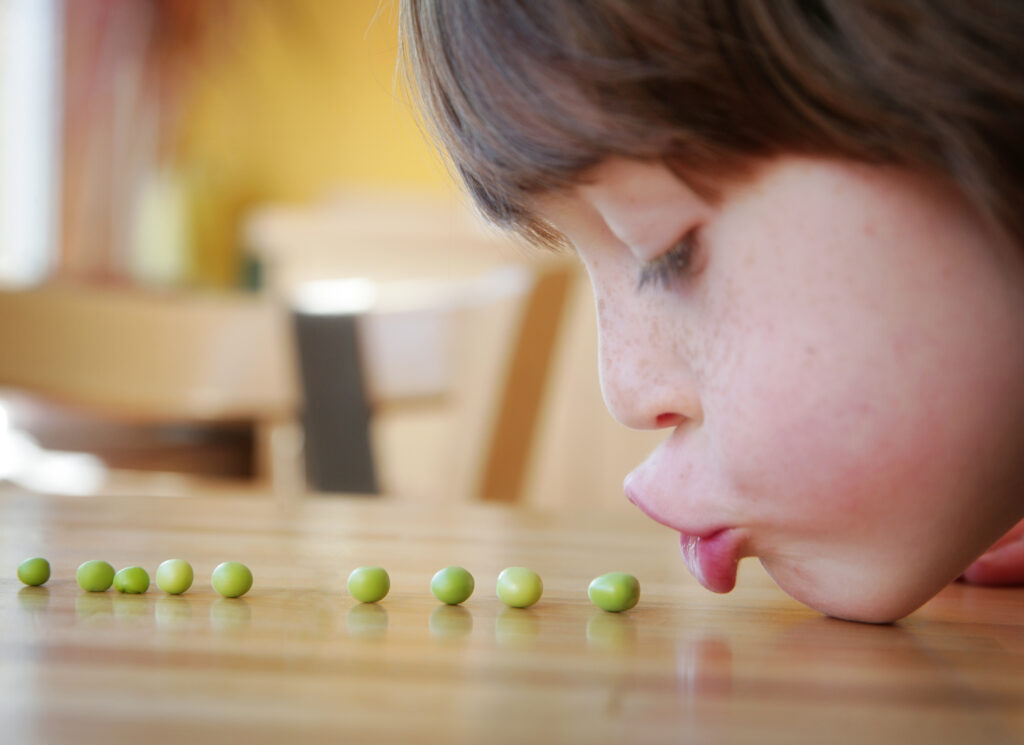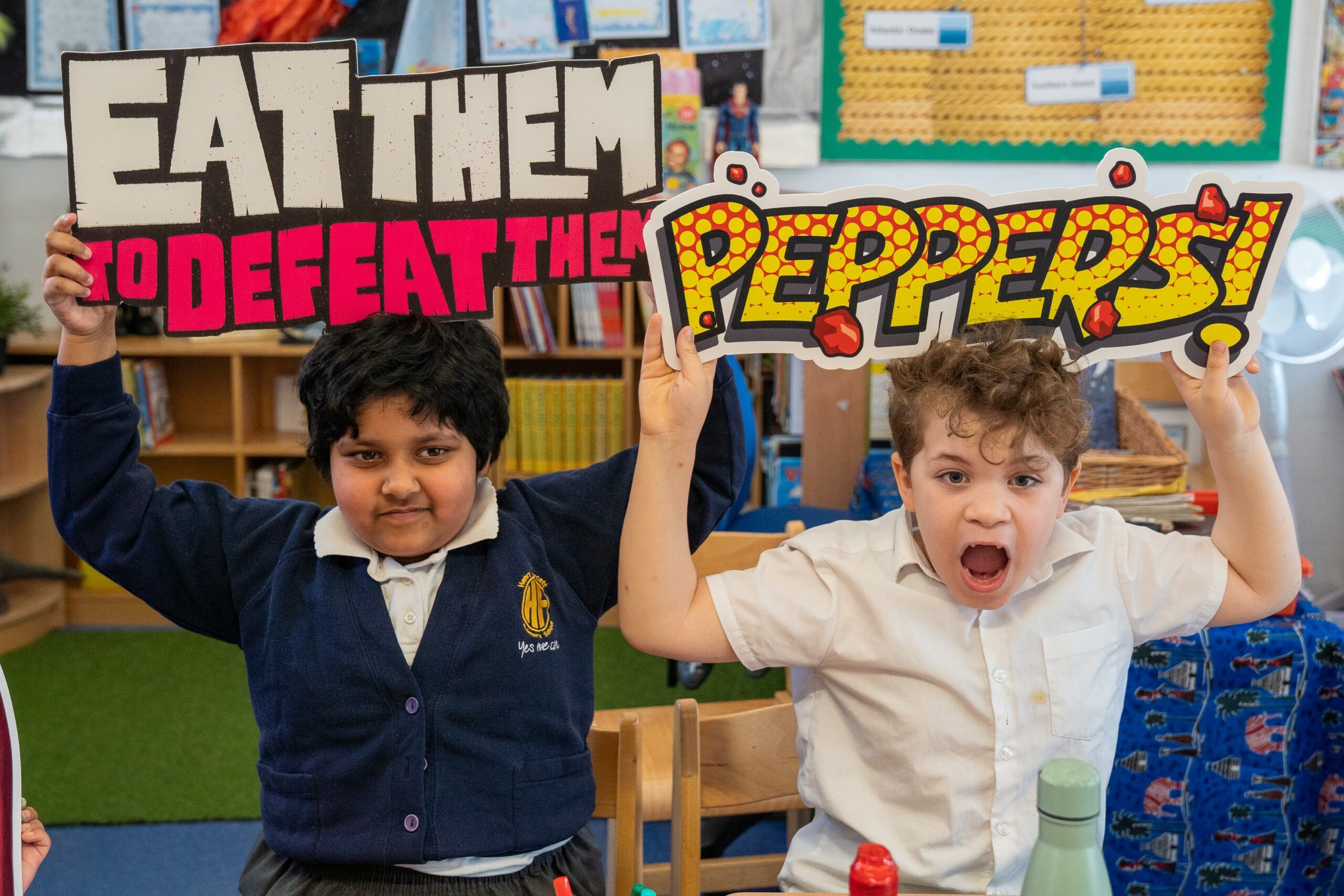
Should kids play with their food?
We asked food writer and broadcast Bee Wilson, should we let our kids play with their food?

We asked food writer and broadcast Bee Wilson, should we let our kids play with their food?

‘Playful’ isn’t necessarily the mood that comes to mind for most parents when talking about helping children to eat more vegetables. ‘Annoying’, ‘exhausting’ and ‘futile’ is more the vibe around many family dinner tables. Or at least, this is how it was for me and my youngest son when he went through a long phase of refusing anything green (or purple or red, come to that).
But there’s a lot of evidence that when it comes to expanding a child’s horizons with vegetables, playing with your food is much more effective than most other techniques such as cajoling or hiding vegetables in a cake (which sounds like a great idea until you realise that it only reinforces the idea that cake is delicious and vegetables are not). Our grandparents were told never to play with their food. Yet it is only by playing with food with all of their senses that a child really gets to know it and decides whether it is safe to eat or not. This is one of the reasons why baby-led weaning can be such an effective way to introduce a child to solid food, because it gives them free rein to experiment with food.
If your kid doesn’t want to eat a vegetable – which is a perfectly natural response – let them know that they are free to smell it or touch it instead – or even lick it and spit it out. Yes, I know that the spitting part isn’t fun to watch. But I swear, my son’s relationship with vegetables was transformed after I started praising him for licking mushrooms and then spitting them out. All of this ‘playing’ is a way to make the vegetables become as familiar and safe to a child as toys.
There are all kinds of games you can play with vegetables, either at dinner time or in between meals. Next time you cook broccoli, try holding a floret in your hands to see if it looks like a little tree. Or pick different herb leaves and encourage your kid to smell them with your eyes closed. Discuss: what does the mint remind you of?
The first rule of feeding children is that nothing tastes good when it’s eaten in a spirit of coercion and this is where a spirit of play can help because it takes the pressure off both parent and the child. Next time you eat sugar snap peas together, instead of worrying about how many get eaten, try prising one of the pods open and counting the tiny peas inside. Or instead of asking your child to eat a tomato, just cut it open and take turns describing what you see. Can you see a pretty pattern, a brain or the letter ‘g’?
The beauty of play is that it is the opposite of pressure. The more a child can tap into their own natural sense of curiosity, the more likely they are – eventually – to try more vegetables. As parents, we are often desperate to get our children to eat the lovingly cooked food we have made (I know I was), but this anxiety can transmit itself to the child without us realising it. Even quite subtle forms of pressure can put a child off their dinner. A group of researchers in the U.S. found that when children were given vegetable soup and told to ‘finish your soup’, they ended up eating less of the soup than a control group who were given no verbal reminder to finish. Not only this, but the children who had been told to finish their soup seemed to have much more negative feelings about it. Children said things like, ‘Yuck, it’s yellow soup again’.
TastEd is a new kind of food education based on encouraging children to play with food using all five senses. Children might use their sense of touch to feel the papery skin of an onion or their sense of hearing to listen to the loud crunch of celery. Teachers report that in the TastEd classroom, children dare to try many more foods than they did before. The two golden rules are ‘no one has to try’ and ‘no one has to like’, which make children feel totally free to explore vegetables knowing that they won’t be judged if they dislike something. One Year 2 teacher in Cambridge recently reported that a child who had been receiving specialist dietitian help for over a year and who never usually ate anything at school felt able to try three new vegetables during a TastEd session – and she actually liked them. This is the power of play.
A few ideas for sensory vegetable games to play at home with your child

Bee Wilson

Supporters Newsletter
Be the first to find out about new downloads, campaigns and news from Veg Power with our monthly email newsletter
Follow Veg Power